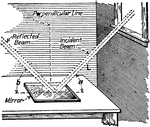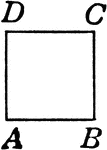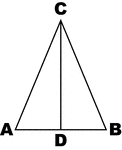
Cylindrical Beam
"The maximum safe load in pounds that any cylindrical beam is capable of sustaining at the middle when…
!["When two bodies of equal weight are connected by a rod, the centre of gravity will lie in the middle of that rod. When two bodies of unequal weight are so connected, the centre of gravity will be nearer to the heavier one. These principles are illustrated [here], in which C represents the centre of gravity." —Quackenbos 1859](https://etc.usf.edu/clipart/36300/36328/cog_rod_36328_mth.gif)
Center of Gravity of Rod with Weights
"When two bodies of equal weight are connected by a rod, the centre of gravity will lie in the middle…
Balance
"When bodies of equal weight are supported by the arms of a lever, they will balance each other when…
!["On this principle the common balance, represented [here] is constructed. A beam is poised on the top of a pillar, so as to be exactly horizontal. From each end of the beam, at equal distances from the fulcrum, a pan is suspended by means of cords. The object to be weighed is placed in one of these plans, and the weights in the other." —Quackenbos 1859](https://etc.usf.edu/clipart/36300/36337/balance2_36337_mth.gif)
Balance
"On this principle the common balance, represented [here] is constructed. A beam is poised on the top…
Compound Lever
"In compound levers, equilibrium is established when the power, multiplied by the first arms of all…

Double Wedge
"Two wedges have been placed toward one another underneath the weight. Equal force is applied to each…
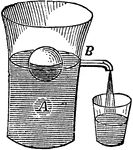
Water Displacement
"As the ball of wood is dropped into the container or water, the water level rises and is caused to…
Prism
"A prism is a piece of glass, having for its sides three plane surfaces and for its ends two equal and…

Construction of Dividing Lines
A line which is divided into seven equal parts, shown by construction.

Construction of Dividing Lines
A line which is divided into equal parts, shown by construction and square.
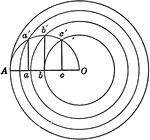
Dividing Circle into Equal Parts by Concentric
Circle divided into equal parts by concentric circles.
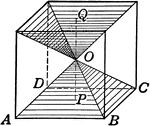
Cube for Illustrating Volume
An illustration of a cube divided into 6 equal pyramids to illustrate how volume can be found.

Zones or Segments of Spheres
An illustration of a zone of a sphere. A zone occurs when a sphere is cut by parallel planes that are…

Zones or Segments of Spheres
An illustration of a zone of a sphere. A zone occurs when a sphere is cut by parallel planes that are…
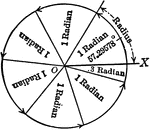
Radians in Complete Circle
Illustration showing that the radian is an angle that when placed at the center of a circle its sides…

Coordinate Axis With Angles, Lines, and Perpendiculars Drawn
Coordinate axis with angle XOP equal to theta, Θ, and angle XOQ=180 - Θ. From any point in the terminal…
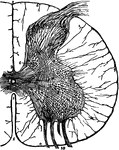
Spinal Cord Section
A thin transverse section of half the spinal cord magnified about 10 diameters. Labels: 1, anterior…
